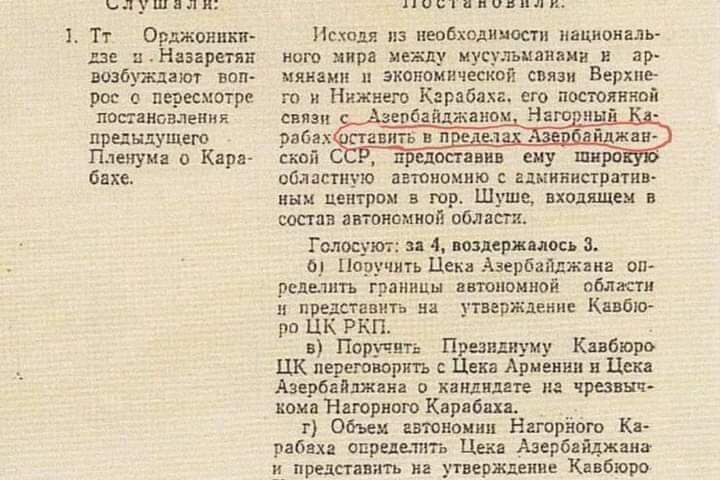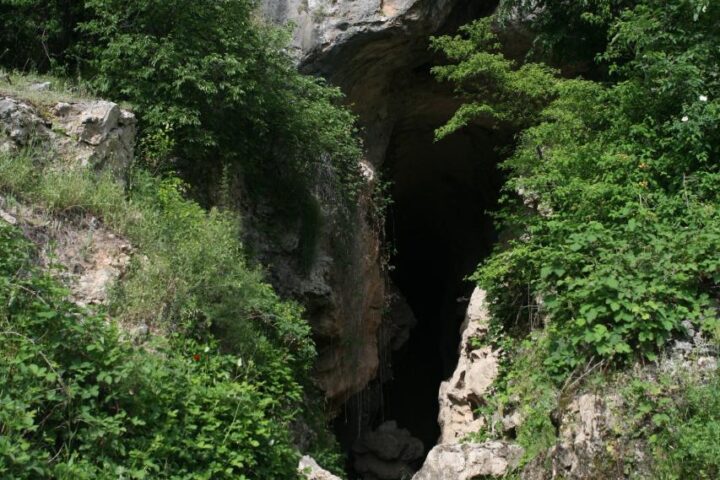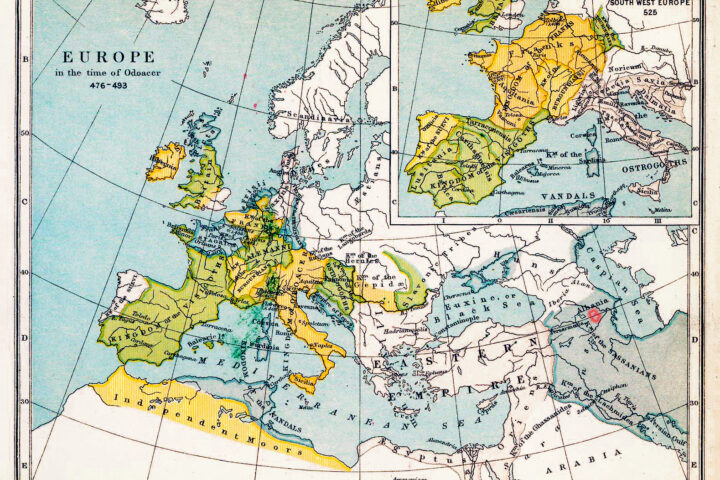At the end of the 9th – beginning of the 10th century, the Albanian ethnic self-conscience revived and materialized in the creation of an autonomous Khachin feudal principality situated in the mountainous part of Karabakh.

The national movement gradually evolved during the years of Arab rule. Thus, at the beginning of the 9th century, the most powerful national insurrection in the history of Arab Capilhate (Empire) took place in Azerbaijan headed by Babek, who, according to the historical sources, was born in Beylakan, supposedly, in the lowland part of Karabakh. This insurrection covered the whole Azerbaijan and adjacent regions and lasted for more than 20 years (816-837).
During these years Babek defeated 6 Arab armies, destroyed more than 225 thousand of the military power of the enemy. Nizam-ul-Mulk, a prominent medieval scientist wrote in his work «Siyasetname» (Political Science): «Mohtasim (the Arab caliph) won three victories praising Islam: first is victory over the Byzantines, second- over Babek, and third- over Mezyer from Tabaristan. If at least, one of these victories would not be won, Islam would be annihilated»[ref]Nizam-ul-Mulk, «Siyasetnameh», Baku 1987 p. 182 (Azeri translation)[/ref]. To the word by the author of «Siyasetname» we would just add, that though Babek couldn’t win in his struggle against the Arab conquerors, but the basis for the Arab rule was considerably weakened, as a result of this insurrection.
After Babek, new insurrections took place in Azerbaijan, as well as in the whole territory of the vast Arab Hilafat stretching from Spain to Central Asia. Karabakh was not an exception either. Thus, not long after Babek’s movement was suppressed, a new insurrection took place in Karabakh, headed by a local feudal lord Isa Abu Musa (in other sources named as Isa ibn Istifanus). 200-thousand strong Arab army attacked the fortress Ktich, where the insurgents found refuge, 28 times, and each time unsuccessfully. This insurrection was suppressed only as a result of fraud of the Arab army commander. During the negotiations, he treacherously breached his word and took Abu Musa into hostage. Then he took Abu Musa to Samira – the capital of the Arab Empire of that time, where he was executed, as was Babek earlier before.
But all these insurrections were not useless. Already, beginning from the 9th century, the growing national-liberation movements, as well as the development of the feudal relations accelerated the decentralization process in the Arab Empire and strengthened the role of the local feudal lords. In turn, this led to the establishment of independent and semi-independent feudal states in the territory of the Arab Empire, including Azerbaijan.
At the end of the 9th – beginning of the 10th century an autonomous Khachin feudal principality emerged in the territory of mountainous Karabakh between the rivers Qarqarchai and Terter. This principality was ruled by one of the branches of the former Albanian Mihranid dynasty – Jalalids, the representatives of which had the title of «the princes of Khachin and Arran», «the rulers of Albania» etc. At first, the principality had the vassal dependence on the Shaddadi State with its capital in Ganje, and later- on the Azerbaijan State of Atabeys. The administrative centre of Khachin was Oglan-kala. The ruins of this settlement built in a favourable – in military-strategic respect – place are located on the right bank of the river Khachin in the territory of the present-day village of Vanklu in Agdere region.
During the Jalalids rule in the mountainous part of Karabakh, the Albanian church revived, as did the Albanian self-conscience, and gorgeous temples, such as Gandzasar (Agdere region), Khotavank (also Dadivank- the Kelbajar region) and others were built. The Khachin principality reached the highest glory during the rule of Hasan Jalal (1215-1261).
As already mentioned, by this time (XII-XIII cc.) the process of cultural-ideological, and partly, the ethnic Armenization of the Christian population of Karabakh was completed, although the overall deethnization of the Albanian ethnicity in the territory of Karabakh didn’t take place yet (this process was completed in XIX c.). But this, again, gave some Armenian historians grounds to claim, that allegedly Khachin was «a part of Armenia», its «eastern edge». But several facts testify against such interpretation of history.
First of all, it’s well known, that the rulers of Khachin were sovereign, and didn’t depend on either neighbouring Georgian kingdom or the Armenian principality of Zakaryans, the latter being under the vassal dependence of Georgians. Besides, in absolutely none of the historical sources the population of Khachin is mentioned as Armenians, quite the opposite, they are called «Agvans/Agvanians», «outsprings of ancient Albanians» etc. Against the Armenian character of Khachin speak also the revival in this region the Albanian ethnic self-conscience, the attempts of the Khachin royal house to demonstrate the continuity between the Albanian kingdom and the ruling dynasty.
In the essence, the only proof of the Armenian belonging of the Khachin monuments of Karabakh is the Armenian inscriptions on them, but this circumstance cannot be the proof of their ethnic belonging.[ref]I. Aliyev, «Mountainous Karabakh. History, Facts, Events» (Nagorniy Karabakh: Istoriya, Fakti, Sobitiya). Baku, 1989, p.66 (in Russian)[/ref]
History knows many similar examples. Almost all of the medieval scientific and other literature of many Oriental Muslim peoples was written in Arab and Persian languages. The whole epigraphy and even the inscriptions on the tombs of these peoples had been written in these languages as well. Throughout almost the whole medieval period Latin was the scientific language of many European people.
All that linked the Khachin principality with Armenia was the religious commonness preconditioned with the subordination of the Albanian church to the Armenian during the Arab rule and, as a consequence of this, utilization of the Armenian inscription. If we equate the religious and writing commonness with the ethnic one, then we would have to call all medieval Muslim peoples either Persians or Arabs. Thus, the Khachin principality, as correctly noticed academician I. A. Orbeli, was «a part of ancient Albania».
A prominent orient historian I. P. Petrushevsky, who considered the Armenian church to be the main instrument of the Armenization of a part of the Albanian population, wrote: «…neither Artsakh, nor other consisted of Armenized Albanians, presently- Armenians, regions and provinces have belonged historically to the centres of the Armenian culture.»
It is also worth to note, that the period of 10th-13th centuries is characterized by the general cultural renaissance in Azerbaijan and oftentimes is called «the Golden Age» in the history of Azerbaijan. This was also a period of consolidation of the Azerbaijani territory under the rule of the Azerbaijani State of Atabeys (1136-1225), the successors of the Seljuk Empire. This period was also a crucial stage in terms of forming the Azeri-Turk people.







